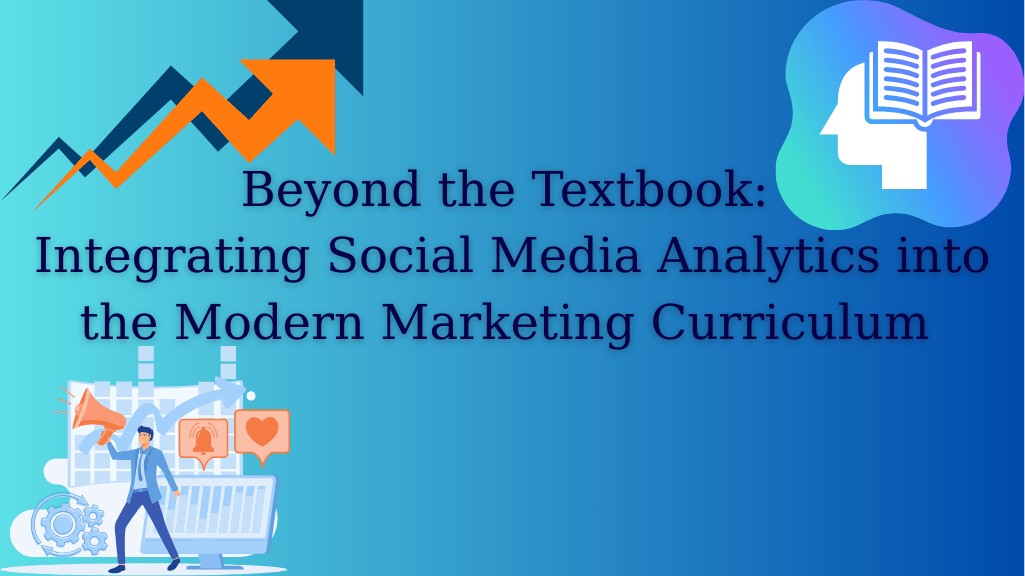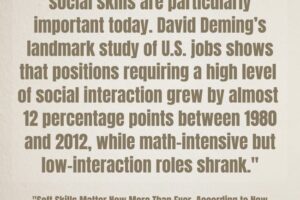
Integrating Social Media Analytics into the Modern Marketing Curriculum – EdTechReview
The modern marketing landscape is a fast-moving torrent of data, a stark contrast to the static case studies found in many traditional textbooks. While foundational principles remain essential, today’s marketing graduates are expected to enter the workforce not just as creative thinkers, but as data-literate strategists. They need to speak the language of metrics, understand the narrative behind the numbers, and pivot strategies based on real-time feedback. This reality presents a clear and urgent need for higher education to evolve its approach.
For educators, this rapid evolution presents a significant challenge. The goal is to equip students with skills that are immediately applicable, ensuring they are not just qualified on paper but are genuinely prepared for the demands of a digital-first marketing role.
The Disconnect Between Theory and Practice
For decades, marketing education has been anchored in established frameworks. While concepts like the marketing mix or SWOT analysis are timeless, their application has been fundamentally altered by technology. A student might be able to perfectly define “brand awareness,” but can they interpret the impression, reach, and engagement rate data that actually measures it? This is where the gap often lies. Students graduate with a robust theoretical vocabulary but can feel overwhelmed when faced with a real analytics dashboard. This disconnect not only affects their confidence but also their value to potential employers, who increasingly prioritize candidates with demonstrable, hands-on experience.
So, how can educators effectively bridge this gap? The answer lies in embedding real-world analytics tools directly into the curriculum, transforming the classroom into a dynamic marketing lab.
Fostering Data Literacy and Critical Thinking
When students engage with live data, they are forced to move beyond memorization. They must analyze trends, formulate hypotheses, and draw conclusions based on evidence. A sudden drop in video watch time is no longer a theoretical problem; it’s a puzzle that requires them to investigate potential causes, from a weak introduction to poor audience targeting. This process hones their critical thinking and problem-solving skills in a context that is both relevant and engaging.
Developing In-Demand Technical Skills
Proficiency with analytics platforms is no longer a “nice-to-have” skill—it’s a core competency. By working with these tools, students gain practical experience in navigating dashboards, understanding key performance indicators (KPIs), and generating insightful reports. According to a report by the Digital Marketing Institute, analytics skills are among the most sought-after by employers. This hands-on practice makes their resumes more competitive and significantly shortens their on-the-job learning curve. If you’d like to explore more ways to strengthen your presence click here.
Simulating Real-World Marketing Scenarios
The classroom can become a microcosm of a marketing agency. Imagine a student team tasked with promoting a university event on YouTube. They create content, monitor performance, and use analytics to make data-driven decisions. They might notice one video thumbnail has a 50% higher click-through rate and apply that learning to future content. This type of experiential learning is invaluable, teaching collaboration, adaptability, and the direct financial and strategic impact of their decisions.
The theoretical benefits are clear, but the practical implementation can seem daunting. Which tools are best suited for an educational setting?
Choosing the Right Tools for the Classroom
The ideal educational tool should be accessible, intuitive, and focused on core analytical principles rather than overwhelming users with enterprise-level complexity. The goal is to teach the “why” behind the data, not just the “how” of a specific platform. Many platforms offer free or “freemium” tiers that are perfectly suited for classroom use. Given that a Wyzowl study found that 91% of businesses use video as a marketing tool, understanding video analytics is non-negotiable.
Educators can leverage accessible, AI-powered tools for YouTube creators to give students a sandbox environment for analyzing video performance metrics without requiring a budget. Furthermore, resources like Google Analytics Academy provide free, structured courses that can supplement classroom instruction and offer students a path to industry-recognized certifications. The key is to select tools that empower students to explore and interpret data independently.
Integrating new technology into any curriculum is not without its hurdles. However, with a strategic approach, these challenges can be easily managed.
Overcoming Implementation Challenges
The primary concerns for educators often revolve around the learning curve for both themselves and their students, the rapid pace of platform updates, and the difficulty of assessing student work. A practical approach is to start small. Focus on one platform and a handful of core metrics for the first semester. Emphasize the underlying principles of data analysis, which are transferable across platforms.
When it comes to assessment, shift the focus from the raw numbers students achieve to the quality of their analysis. Grade them on their ability to interpret the data, explain the “why” behind the results, and propose actionable, data-backed recommendations for improvement. This method assesses their strategic thinking rather than their ability to simply game an algorithm.
Frequently Asked Questions
What are the most crucial social media metrics for students to learn?
Students should start with foundational engagement and reach metrics. For platforms like YouTube, focus on Click-Through Rate (CTR), Average View Duration, and Audience Retention. For others, Impressions, Engagement Rate (likes, comments, shares), and Follower Growth are key. The goal is to teach them how these metrics work together to tell a story about content performance and audience behavior.
How can I assess student projects that use live social media data?
Focus on the process and the analysis, not just the final numbers. Ask students to submit a report that outlines their initial strategy, presents the data they collected, interprets what that data means, and proposes specific, evidence-based recommendations for future actions. This assesses their critical thinking and strategic application of the analytics.
Are free analytics tools powerful enough for a university-level course?
Absolutely. For educational purposes, free tools are often ideal. They provide access to the essential metrics needed to teach core principles of data analysis without the overwhelming complexity (and cost) of enterprise-level software. The native analytics within platforms like YouTube, Instagram, and Facebook, along with free third-party tools, offer more than enough depth for a robust academic project.
Beyond marketing, which other disciplines can benefit from learning social media analytics?
The skills are highly transferable. Journalism and communications students can use analytics to understand audience engagement and content distribution. Business and entrepreneurship students can learn to measure brand health and ROI. Even students in sociology or political science can use social data to analyze public sentiment and the spread of information.
Source link



